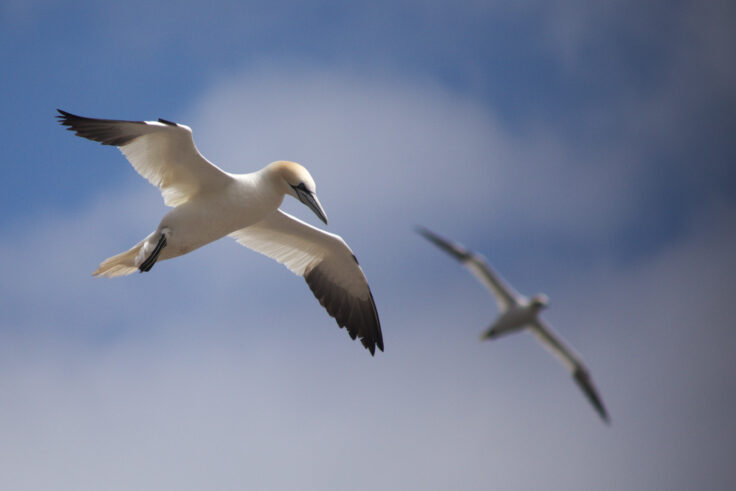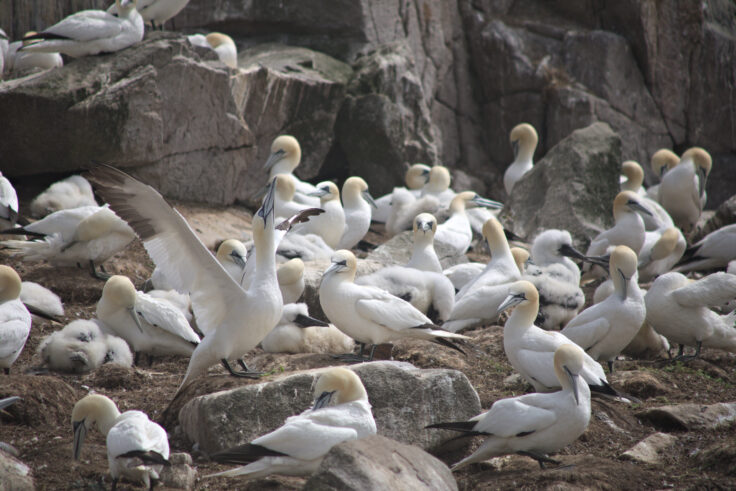Left or right winged? Handedness in diving northern gannets
A new study of northern gannets has found that individual birds are left or right winged. The study, published in in Biology Letters, is the first to demonstrate ‘handedness’ in seabirds while hunting.
Gannets are well known for their spectacular plunge dives from around 30m high, folding back their wings and diving into water to capture prey up to 14m below the ocean’s surface. At the start of a plunge dive, gannets roll to one side – a manoeuvre that scientists think help gannets keep sight of prey.

Scientists analysed the techniques of 2,133 dives by 51 northern gannets. The data included both roll direction and roll angle. They found that individual birds consistently repeated their preferred roll direction across multiple days and weather conditions. The findings show that the birds had an approximate 50/50 split between right and left sided preference, alongside three “ambidextrous” birds.
The observations also revealed that individuals were consistent in their roll angle – with some birds rolling a little, and some right over as they turned into their dive.
Lead author Ashley Bennison, also Science Manager at Bird Island Research station for British Antarctic Survey, said:
“Gannet plunge dives are an amazing spectacle – they reach speeds of 80km/h and pull greater g-forces than an astronaut before hitting the water in a perfectly straight line!
Just before doing this study, we noticed that they tend to roll either onto their left or right side to enter the water exactly where they want – behaviour that we have seen is consistent and repeatable by each bird.”

Many vertebrates show handedness, or lateralised behaviour, where an individual preferentially uses one side of the body more than the other. Lateralisation is more apparent in species that engage in demanding or complicated tasks such as prey handling or detection.
Ashley continued:
“We think this evolves especially for complex tasks. That means that animals only have to learn once, and therefore save energy by only developing the neural pathways on one side of the brain for a particular behaviour.
This is a particularly brilliant piece of evolution as it allows animals to undertake complex behaviour whilst also being able to multitask other activities. In this case – it allows a gannet to manipulate its body for a plunge dive, but possibly also keep visual track of its prey or even other birds.”
‘Handedness and individual roll-angle specialism when plunge diving in the northern gannet’ by Ashley Bennison, Bethany L. Clark, Stephen C. Votier, John L. Quinn, Jamie Darby and Mark Jessopp is published in Biology Letters.
The research was undertaken with collaborators from BirdLife International, University College Cork, and University of Exeter.